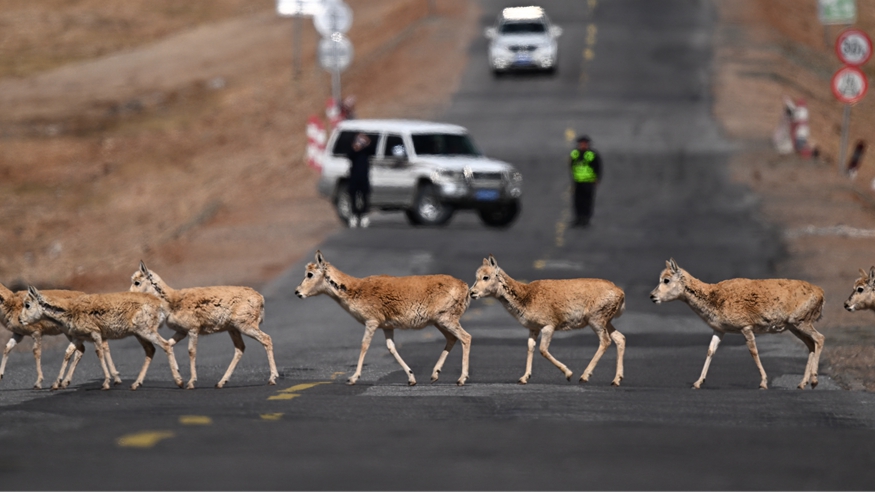
This photo taken on April 20, 2021 shows Tibetan antelopes in the Sanjiangyuan area in northwest China's Qinghai Province. (Xinhua/Wu Gang)
XINING, June 4 (Xinhua) -- Over the years, China has made consistent strides in enhancing its ability to protect the biodiversity of the Sanjiangyuan area in northwest China's Qinghai Province.
The Sanjiangyuan area, known as China's "water tower," contains the headwaters of the Yangtze, Yellow and Lancang rivers. Located at an average altitude of more than 4,700 meters, Sanjiangyuan National Park is the world's highest national park covering a total area of 190,700 sq km and boasts one of the highest concentrations of biodiversity in the world at high altitudes.
Every year, tens of thousands of pregnant Tibetan antelopes start their migration to Hoh Xil in around May to give birth and leave with their offspring in late July.
During the 1980s and 1990s, due to poaching sprees, the population of Tibetan antelopes in Hol Xil dropped to less than 20,000. Thanks to the country's active anti-poaching and biodiversity protection efforts in recent years, Hoh Xil is now home to more than 70,000 Tibetan antelopes. The status of Tibetan antelopes in China has been downgraded from "endangered" to "near threatened."
Since the establishment of the Longbao national nature reserve, located in the Sanjiangyuan area, in 1984, the number of bird species in the reserve has increased from 30 to 138.
According to Pasang Tsering, head of the management station of the reserve, the number of black-necked cranes, a species under first-class national protection, in the reserve rose from a few dozen to more than 200, and the bar-headed geese numbered over 10,000 at its peak.
This year, the reserve has been listed as a "wetland of international importance," and its ecosystem and biodiversity will undergo comprehensive and systematic protection, Pasang Tsering added.
The Namse Township of Qinghai's Yushu Tibetan Autonomous Prefecture, also located in the Sanjiangyuan area and through which the Lancang River flows, is known as the "hometown of snow leopards." This distinction stems from the frequent sightings of this highly protected species, which is under China's highest national-level protection.
More than 80 individual snow leopards have been recorded in Namse, where these creatures coexist with other wildlife, including lynx and white-lipped deer.
Tian Jian, chief engineer of the forestry and grassland bureau of Qinghai Province, said 85 percent of wildlife habitats in the province have been put under natural conservation management, and the population of rare and endangered wild animals has increased significantly.
According to Zhang Yu, an official with the bureau, in the past decade, remarkable progress has also been made in the protection and research of rare and endangered wild plants in Qinghai.
By promoting the development of a natural reserve system with national parks as the main body, more than 75 percent of wild plants in the province have been effectively protected, helping to build a national gene bank for the genetic resources of wild organisms on the Qinghai-Tibet Plateau. ■












